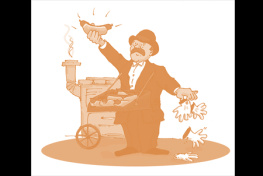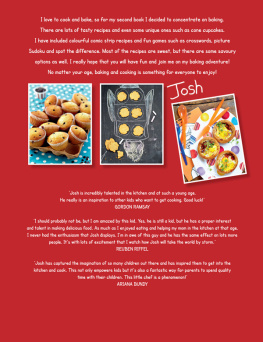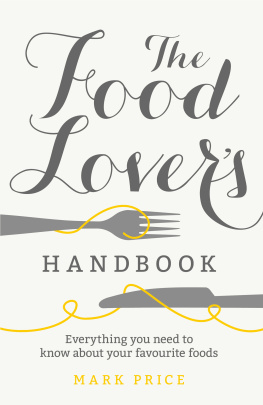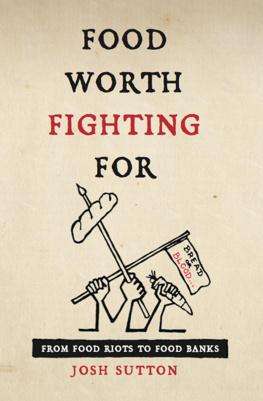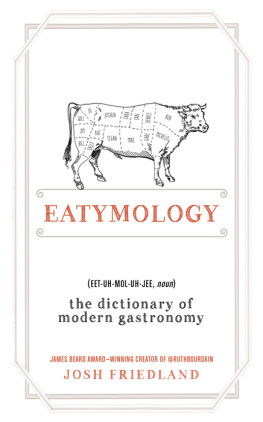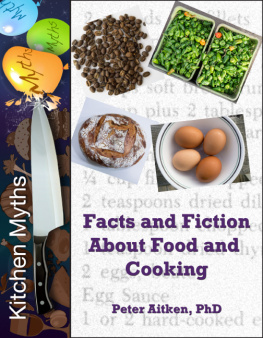
How the Hot Dog
Found Its Bun
Accidental Discoveries and
Unexpected Inspirations That Shape
What We Eat and Drink
Josh Chetwynd
illustrations by David Cole Wheeler

For Jennifer and Becca
Copyright 2012 Josh Chetwynd
ALL RIGHTS RESERVED. No part of this book may be reproduced or transmitted in any form by any means, electronic or mechanical, including photocopying and recording, or by any information storage and retrieval system, except as may be expressly permitted in writing from the publisher. Requests for permission should be addressed to Globe Pequot Press, Attn: Rights and Permissions Department, PO Box 480, Guilford, CT 06437.
Lyons Press is an imprint of Globe Pequot Press.
Illustrations: David Cole Wheeler
Text design: Ann Pawlick
Project editor: Julie Marsh
Layout: Maggie Peterson
Library of Congress Cataloging-in-Publication Data is available on file.
ISBN 978-0-7627-7750-1
Printed in the United States of America
E-ISBN 978-0-7627-8528-5
Contents
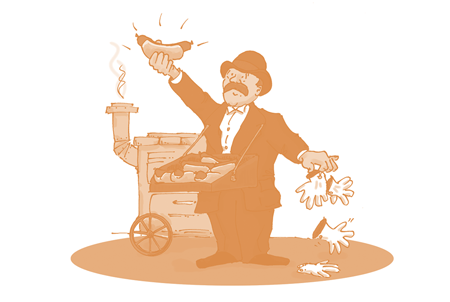
Introduction
Luck touches every part of our lives. As the Roman poet Ovid once said, Luck affects everything; let your hook always be cast. In the stream where you least expect it, there will be a fish.
In the culinary world, hearing luck and food in the same sentence isnt always a good thing. It can conjure up thoughts like, Youre lucky you didnt get sick from that week-old pizza! But when it comes to the creation of great dishes, satisfying drinks, and useful kitchen utensils, its a concept that can captivate us.
Consider, if you will, the Reeses Peanut Butter Cup. Back in the 1970s and 1980s, the chocolate-peanut-butter marriage was celebrated with a highly successful ad campaign featuring two people colliding and their beloved foods intermingling. Their campy verbal exchangeYou got peanut butter on my chocolate! Your chocolate is in my peanut butter!would end with unintended gastronomic bliss. Decades on, these spots still resonate (for proof, just check out a parody of the ads on YouTube from the animated comedy series Family Guy ). Why? Because we love happy culinary accidents, and, as it happens, theres no shortage of them. Nachos and Popsicles. French dip sandwiches and potato chips. Microwaves and paper towels.
Luck, in fact, is the resonating theme of this book. It drives so many of those culinary instances of unforeseen good fortune that have kept our bellies full and our kitchens running smoothly over the centuries.
Behind these lucky discoveries are usually acts of serendipity, a concept first coined by Horace Walpole in 1754. Hed read a book about Serendip (modern-day Sri Lanka) called The Three Princes of Serendip and was fascinated by the title characters, who were always making discoveries, by accident and sagacity, of things which they were not in quest of. Using that quote as a definition, he started describing some of his work as serendipity .
What makes serendipity so fascinating is the combination of the lucky find and the smarts (or to use Walpoles fancier term sagacity ) to capitalize on the breakthrough. As Albert Einstein once said about discovery: The really valuable factor is intuition.... There is only the way of intuition, which is helped by a feeling for the order lying behind the appearance. The intuition to turn what looks like a blunder into something special comes up often throughout this book. Take the ever-popular cereal Wheaties for instance. A fella was cooking up some gruel when a bit dripped onto an open stove, crackling over the open fire. He could have simply cleaned the mess and gone about his day. But he intuitively recognized its potential and brought it to a local company, which, employing a little sagacity of its own, figured out how to transform the flakes into a commercially viable way to eat breakfast.
While the book mines many stories of serendipity, chance does come in other formsand these get play here as well. For instance, there are times when you actually know exactly what you want to create but struggle with how to get there. When happenstance allows you to find that missing link, these moments have been dubbed by scientist and author Royston M. Roberts as pseudoserendipity . For those who have ever popped a couple of Alka-Seltzer tablets for soothing relief after an exceptionally rich meal or a little too much alcohol, you can chalk it up to this particular form of fantastic luck. An inventor plugged away looking for just the right combination to make the famed tablet but came up empty until a trip to the local newspaper surprisingly presented the answers to his problem.
Just for good measure, Ive also covered a third type of fluky creation. Its not so much serendipity as it is about unpredictable or mistaken motivations (call them the cousins of serendipity). These occur before the first physical steps of creation, coming during the conceptualization phase. They include either an unplanned fortuitous encounter that spurs the essential kernel of the idea or a completely misguided reason to start rolling up the sleeves. For example, the Filet-O-Fish falls in the category of unanticipated inspirations. A McDonalds franchisee was all about making burgers, but when he found out the surprising reason for why he was doing terrible business on Fridays (thanks to churchgoers who didnt eat meat on this day), he was forced to come up with an alternative to the regular menu. As for the misguided, there was Sylvester Graham, who created his eponymous crackers because he hoped eating them would help diminish sex drives.
So what exactly draws us to these culinary origin stories in which luck features so prominently? First off, the stories are entertaining and surprising. Often the initial steps for products like Tabasco Sauce or cheese puffs are far from what youd anticipate. Also, in some ways, discovering just how much fate plays in the recipe of so many successful products is inspirational. It gives hope to toiling chefs or tinkerers that if they keep trying long enough lady luck may ultimately lend a difference-making hand.
Interestingly, these two reasons have led to another common phenomenon when it comes to accidental discoveries and unexpected inspirations in the kitchen: myth making. It turns out that a number of highly heralded anecdotes of this type of invention are untrue. In a way, this seems counterintuitive because what inventor would want to weave a tall tale that gives greater applause to a mistake than to its creator? (Dont we all want full credit?) Part of the explanation is that quite often its not the original inventor who spins the fanciful yarn but future beneficiaries who see the story as a memorable way to bring attention to the product. If the story inspires or is captivating enough to increase interest why not stretch the truth?
Throughout this book Ive tried to do a little food-myth-busting by flagging those stories, assessing their accuracy, and, when appropriate, serving up alternate creation explanations. Still, even if some of these accounts are more fanciful than honest histories, they remain worthy to recount. Why? Because more often than not theyve become a central part of a certain food or drinks narrative. For example, maple-syrup makers often cite a historical tale thats probably apocryphal; ditto for ice-cream cone producers. While those legends may not tell you the full story of the products beginnings, they do give you some insight into how the products have been marketed over the years and how they became such an indelible part of our everyday lives.
Next page
